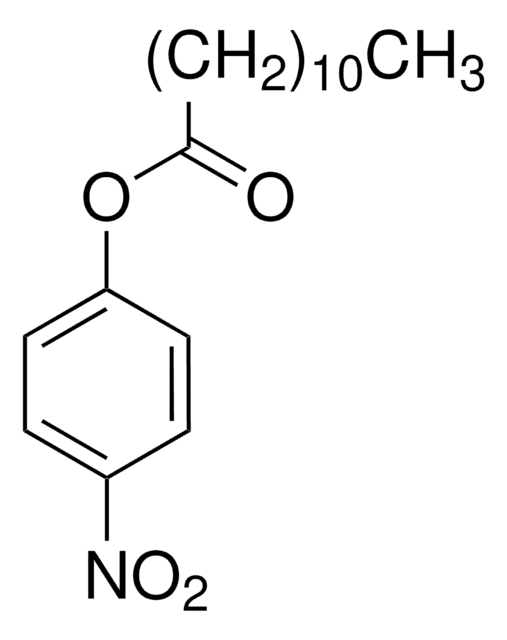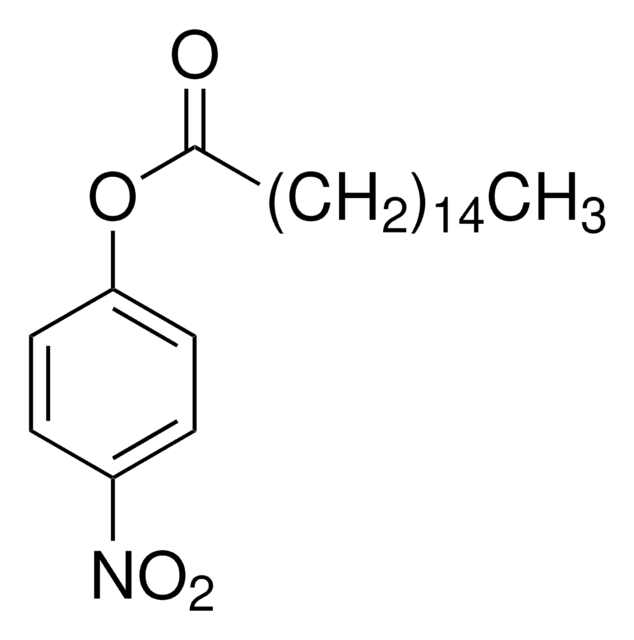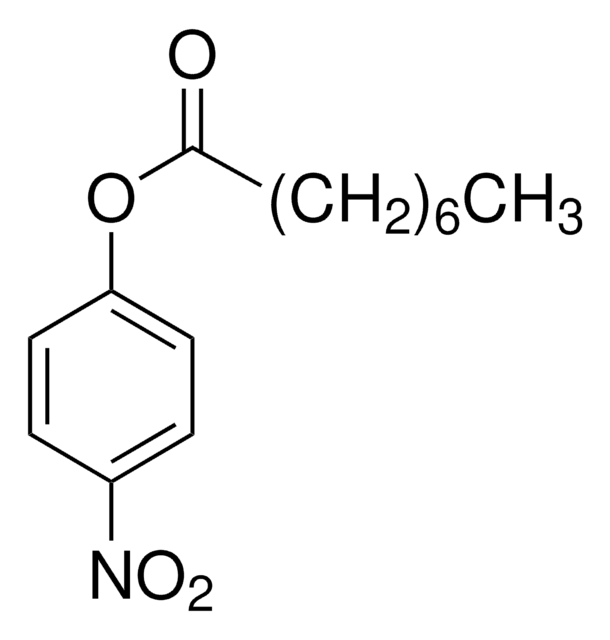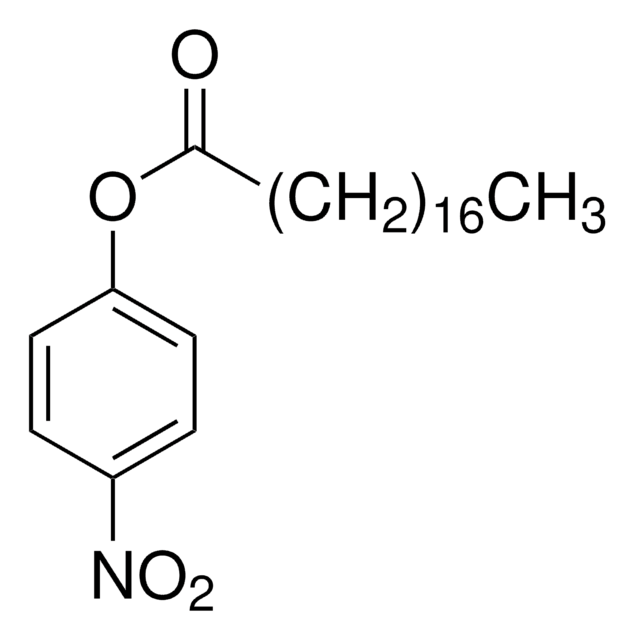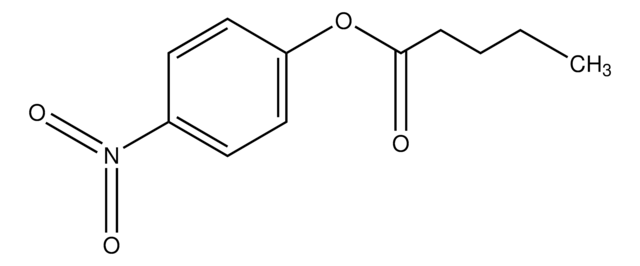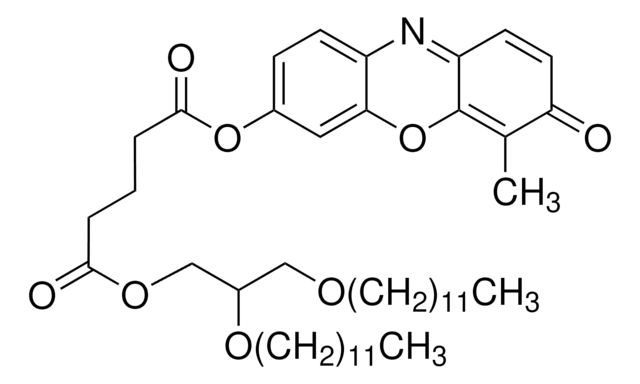70124
4-Nitrophenyl myristate
lipase substrate, ≥95.0% (HPLC), powder
Synonym(s):
4-Nitrophenyl tetradecanoate
Sign Into View Organizational & Contract Pricing
All Photos(1)
About This Item
Empirical Formula (Hill Notation):
C20H31NO4
CAS Number:
Molecular Weight:
349.46
Beilstein:
2004374
EC Number:
MDL number:
UNSPSC Code:
12352204
PubChem Substance ID:
NACRES:
NA.83
Recommended Products
Product Name
4-Nitrophenyl myristate, ≥95.0% (HPLC)
Quality Level
Assay
≥95.0% (HPLC)
form
powder
solubility
chloroform: 50 mg/mL, clear to very slightly hazy, colorless to dark yellow
storage temp.
−20°C
SMILES string
CCCCCCCCCCCCCC(=O)Oc1ccc(cc1)[N+]([O-])=O
InChI
1S/C20H31NO4/c1-2-3-4-5-6-7-8-9-10-11-12-13-20(22)25-19-16-14-18(15-17-19)21(23)24/h14-17H,2-13H2,1H3
InChI key
ZBBNFJIVAHGZKA-UHFFFAOYSA-N
Application
4-Nitrophenyl myristate has been used as a substrate to measure the activity of:
- bile salt-activated lipase
- esterase
- neutral lipase
Signal Word
Warning
Hazard Statements
Hazard Classifications
Skin Irrit. 2
Storage Class Code
11 - Combustible Solids
WGK
WGK 3
Flash Point(F)
Not applicable
Flash Point(C)
Not applicable
Personal Protective Equipment
dust mask type N95 (US), Eyeshields, Gloves
Choose from one of the most recent versions:
Already Own This Product?
Find documentation for the products that you have recently purchased in the Document Library.
Customers Also Viewed
Qiaoqiao Sun et al.
Journal of bioscience and bioengineering, 122(5), 539-544 (2016-10-26)
Thermophilic Neosartorya fischeri P1 is an excellent lipase producer and harbors seven lipase genes. All genes were found to be functional after heterologous expression in Escherichia coli. One of them, LIP09, showed high-level expression in Pichia pastoris with the yield
Mirella Vazzana et al.
The Journal of the Acoustical Society of America, 147(4), 2414-2414 (2020-05-04)
Underwater sounds generated by anthropogenic activity can cause behavior changes, temporary loss of hearing, damage to parts of the body, or death in a number of marine organisms and can also affect healing and survival. In this study, the authors
Maria Stella Cappello et al.
Systematic and applied microbiology, 33(8), 461-467 (2010-11-26)
The diversity of indigenous Oenococcus oeni strains was investigated by molecular and biochemical characterization of isolates from Malvasia Nera wine, an economically important red wine of the Salento Region (Apulia, Italy), during spontaneous malolactic fermentation (MLF). A total of 82
Héctor Cordero et al.
Fish & shellfish immunology, 58, 500-507 (2016-10-23)
Skin mucus is increasingly used as a source for determining immunity-related proteins and enzymes. However, the ability to accurately measure some activities may be modified by inadequate handling and storage of the samples. This study aims to measure the effect
Israel García-Cano et al.
Journal of dairy science, 103(5), 3912-3923 (2020-03-10)
Lipolysis occurs during ripening of dairy products as a result of esterase or lipase activity. Lactic acid bacteria (LAB) are considered to be weakly lipolytic bacteria compared with other species. In cheeses with extended ripening periods, lipolytic LAB may have
Our team of scientists has experience in all areas of research including Life Science, Material Science, Chemical Synthesis, Chromatography, Analytical and many others.
Contact Technical Service